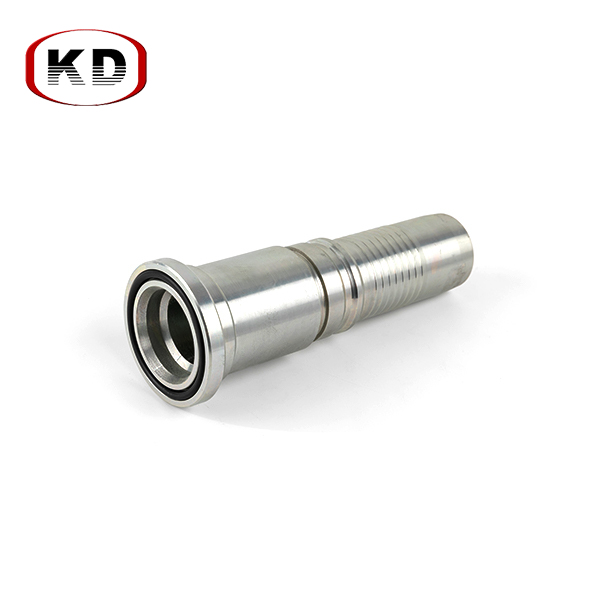Many years of foreign trade experience.
Strong production capacity, and massive stock to make sure the delivery time.
ISO quality process to make sure every piece qualifies.
One-to-one service, OEM service, provides alternative efficient solutions.

 By Admin
By Admin
Improper Installation: Cause: Improper installation of hydraulic hose adapters can result in a range of issues, including leaks, mechanical damage, or system inefficiencies. Common mistakes include misalignment, incorrect torque application, or using incompatible components. Misalignment can bring to uneven stress distribution, while incorrect torque can either loosen connections or damage threads and sealing surfaces. Prevention: To prevent installation-related failures, adhere strictly to the our installation instructions. This includes using a calibrated torque wrench to apply the correct torque according to specifications, ensuring precise alignment of the adapter with the hose and fitting, and confirming that all components are compatible. Employing experienced technicians and providing them with comprehensive training on installation practices can also help minimize errors.
Incorrect Sizing: Cause: Hydraulic hose adapters must match the size and thread type of the associated hoses and fittings. Incorrect sizing can bring to leaks, reduced flow efficiency, or mechanical failure. For instance, an adapter that is too small may not fit securely, while one that is too large may not provide a proper seal. Prevention: To prevent sizing issues, use precise measuring tools to verify the dimensions of hoses and fittings before selecting adapters. Consult detailed sizing charts and, when in doubt, work with suppliers or manufacturers to ensure the correct adapter is chosen. Ensure that adapters meet industry standards for size and compatibility.
Material Compatibility Issues: Cause: Hydraulic hose adapters are subjected to various fluids and environmental conditions. Adapters made from incompatible materials may degrade or corrode, bring to failure. For example, an adapter made from standard steel might corrode in a system using aggressive chemicals or saline environments. Prevention: Choose adapters made from materials that are compatible with the hydraulic fluid in use and the environmental conditions to which they are exposed. Materials should be selected based on their chemical resistance, temperature tolerance, and pressure ratings. For example, stainless steel or specialized alloys might be required for corrosive environments, while standard carbon steel may suffice for less demanding applications.
High Pressure and Temperature Exceeding Ratings: Cause: Hydraulic systems often operate under high pressure and temperature conditions. Adapters that are not rated for these conditions may fail, resulting in leaks or catastrophic failure. For instance, operating an adapter at pressures exceeding its peak rating can cause it to burst or deform. Prevention: Always verify that the hydraulic hose adapters selected have pressure and temperature ratings that exceed the peak operational limits of the system. Regularly monitor system conditions to ensure they remain within safe limits. Employ safety margins by choosing adapters with ratings well above typical operating conditions to account for potential spikes or fluctuations.
Corrosion: Cause: Corrosion can significantly weaken hydraulic hose adapters, particularly in harsh environments where they are exposed to moisture, chemicals, or salt. Corrosion can bring to pitting, weakening of the material, and eventual failure of the adapter. Prevention: Utilize adapters that feature corrosion-resistant coatings or are made from corrosion-resistant materials such as stainless steel or specialized alloys. Implement environmental controls to minimize exposure to corrosive elements, and perform routine inspections to detect and address any signs of corrosion before they bring to failures.
SAE FLangs 3000 PSI Pressure-resistant Swage Hose Fitting
